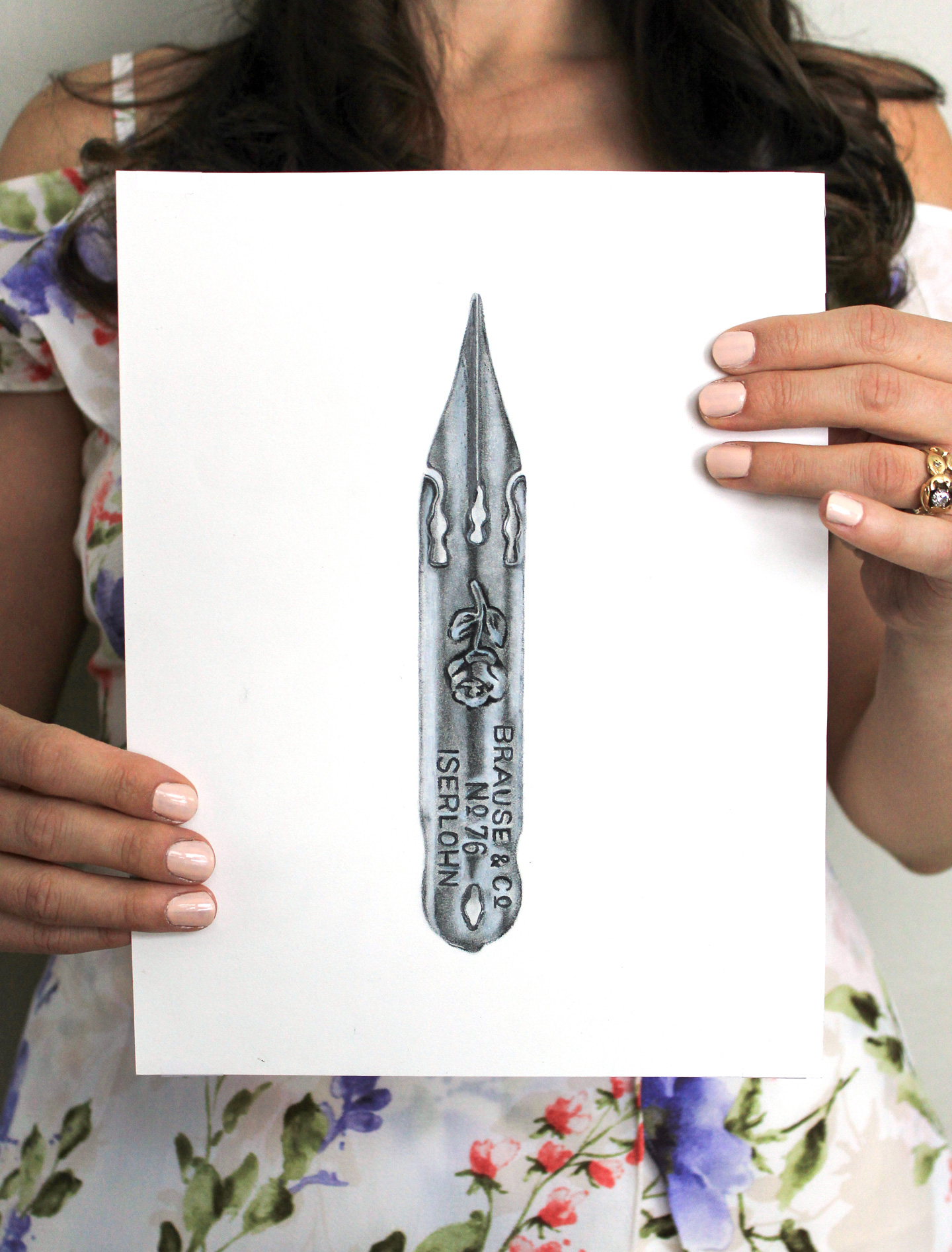
By and large, the coolest thing about having this blog is getting to connect with creative people. It opens up a whole world of opportunity to expose myself to incredible talent, whether it comes from Germany, Italy, or places closer to {my} home, like New Mexico! Today’s blog post comes to you from illustrator Zakkiya Hamza in Qatar.
Recently, a couple of comments on TPK blog posts by Zakkiya led me to explore her website, Inkstruck Studio. I was immediately drawn to the whimsical, sweet style of her watercolor illustrations. Her work possesses a certain soothing harmony that I love.

When she was kind enough to agree to write a watercolor illustration tutorial, I was thrilled! Not only has she written a wonderful tutorial for us, but she has thoughtfully provided the image as a background for desktop/iPhone/iPad {find the download links at the bottom of this post}. So, without further ado, I’ll hand it over to Zakkiya.
 Hi everyone. My name is Zakkiya Hamza and I’m the thinker, blogger and maker behind Inkstruck Studio. I’m so thrilled to have the opportunity today to write a tutorial post for Lindsey. I hope you will find this simple, easy-to-follow watercolor illustration tutorial useful. So, let’s dive straight in, shall we?
Hi everyone. My name is Zakkiya Hamza and I’m the thinker, blogger and maker behind Inkstruck Studio. I’m so thrilled to have the opportunity today to write a tutorial post for Lindsey. I hope you will find this simple, easy-to-follow watercolor illustration tutorial useful. So, let’s dive straight in, shall we?
Step 1
Before starting an illustration of any kind, you need to have an idea of what you’re going to put on to paper. First, take a rough paper or sketch book of your choice and start roughly sketching out your idea. Below you can see how I’ve done a rough sketch with the color scheme and other things marked. I then either trace the design onto paper or freehand it on good quality watercolor paper.

Step 2
After the sketch has been completed, start doing the line work neatly using a fine tip pen such as Micron. Make sure that the pen does not bleed on the paper and it should also be a waterproof one so that the watercolor will not smudge or dissolve it.

Step 3
Start filling in color using watercolors or inks of your choice. What I’ve used here is Fuji colors which are a sort of paper pigments. You can tear off bits of paper and put it in your color and when you use it with water, it gives bright beautiful colors. Below you can see me start filling my teapot outline in with the color crimson.

Step 4
To give dimension to the painting, I started giving some shade to the painting using colored pencil. I used my trusted Faber Castell Polychromos in the color “Burnt Carmine”, but you can use any colored pencil that you have on hand.

Step 5
Start filling in the colors for the terrarium bits. I used Foliage Green and Dark green from my Fuji colors set.

Step 6
After completing the watercolor illustration, I decided to add a little heart-warming quote using the Faux Calligraphy technique following Lindsey’s tutorial. I was so thrilled to discover that this technique is so effective and creates beautiful results.

I hope you had an interesting time reading this tutorial. I had lots of fun working on this post. You can see the full list of materials I’ve used for this illustration in the image below.

- Staedler Mars Lumograph pencils
- Winson & Newton watercolor brush
- Faber Castell polychromos pencil in the color Burnt Carmine
- Daler Rowney cold pressed watercolor paper
- Fuji colors*
- Sakura koi watercolor set
- Pallete
- Tuff Stuff eraser
- Micron pen
*Fuji colors are a kind of watercolor that I bought from Bangalore in India. I have not come across it on any online sites or in stores I have visited in Dubai or Doha.
Thanks so much, Zakkiya! For those of you who would like to download this illustration as a desktop/laptop, iPhone, or iPad background, you may do so by clicking here. If you have any questions or observations, always feel free to comment.
Until next time, thank you for reading!
XO,

*This post contains affiliate links to Amazon



 Hi everyone. My name is Zakkiya Hamza and I’m the thinker, blogger and maker behind
Hi everyone. My name is Zakkiya Hamza and I’m the thinker, blogger and maker behind 







